A film eloquently crafted and visualized. A unique structuring. A visual style best described as painterly beauty with strong framing and use of color. A story seen through the eyes of an 11-year old girl in middle America farm country in the 1982 Reagan Era. This is AMERICAN FABLE, the feature debut of writer/director Anne Hamilton.

Lawyer turned filmmaker, one look at the film and you immediately see Hamilton’s legal background come into play with the balance within her storytelling, both from a story standpoint and visuals. There are two sides to every story and by film’s end, Hamilton leaves it up to the audience (aka jury) to decide for themselves who is right, who is wrong, etc. Interning with Terrence Malick on “The Tree of Life” also made its mark on Hamilton, notably with more aesthetic dreamlike sweeping overhead shots. But unlike Malick, there is a deliberateness and well-crafted purpose to every element of AMERICAN FABLE, starting with the story and our heroine, Gitty.
As timely and topical today in its themes of disenfranchisement, moral dilemmas, the haves versus the have-nots, warriors versus weak (big business versus farmers), AMERICAN FABLE is timeless.
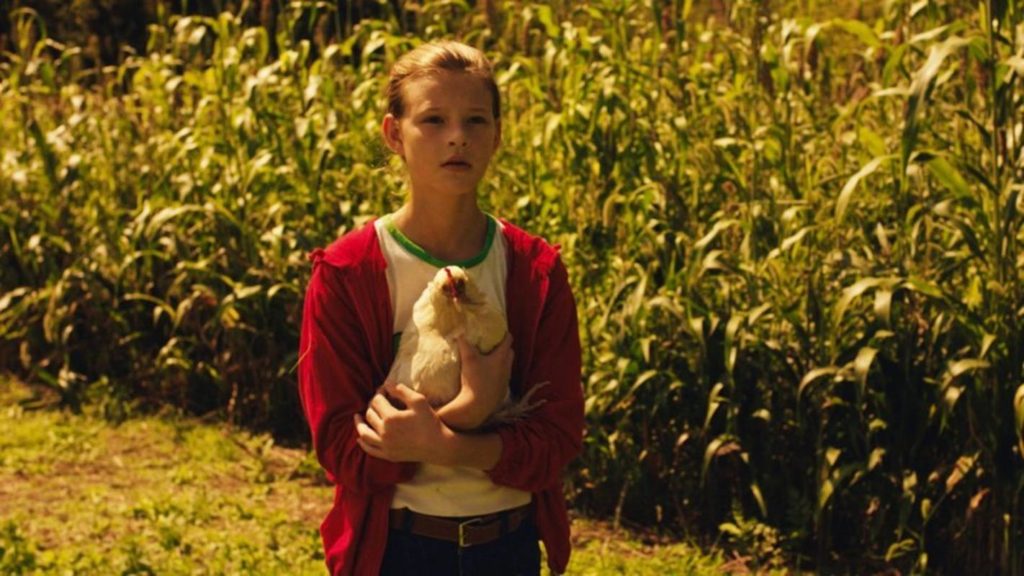
Set in Madison, Wisconsin, farm country USA, in the midst of the 1980’s farm crisis, we are acutely aware of the financial distress of the community and families in AMERICAN FABLE. Farming has been the way of life for many of these families for generations. As one farm after another fails and land is bought up by developers, those remaining stand strong, desperately trying to hold on not only to their legacy, but their way of life. Rumors of suicides run rampant, casting a dark pallor all around. One such family affected by the crisis is Gitty’s.
Gitty is the apple of her father’s eye. A true loner, but for her dad Abe, Gitty’s best friend is her pet chicken, Happy. Abe has been doing his level best to keep the dire news about their own farm from Gitty, her factory-worker mother Sarah (pregnant with her third child), and Gitty’s older brother Martin. While Gitty is the joy within the family, Martin borders on the truly psychotic, obsessing about killing and evil.
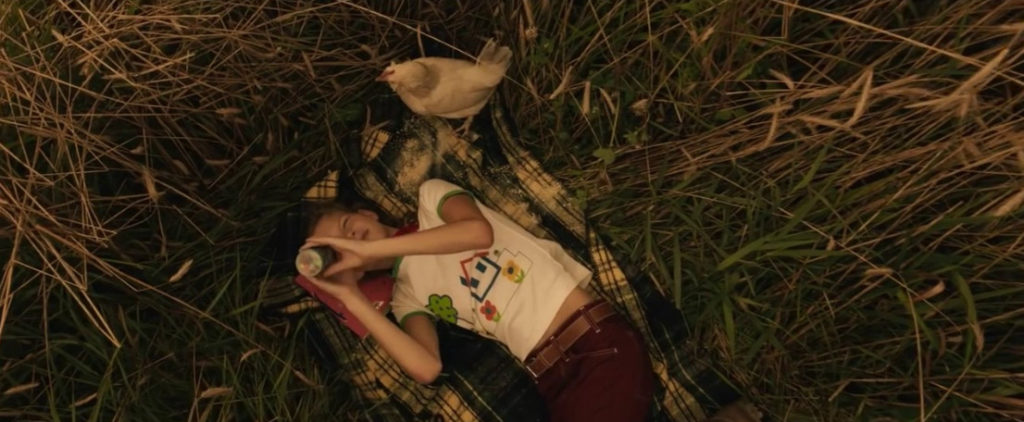
With an active imagination, Gitty is a happy child. She doesn’t mind being alone. She dreams, she envisions things. One day while roaming through the cornfields riding her bike, Gitty stumbles onto something strange. On the far reaches of the family farm, locked in an old unused silo, is a man named Jonathan. Obviously a man of some means, although dirty, his clothes are expensive. He is wearing a vest. On Gitty’s discovery of him, he begs her for food as he apparently hasn’t eaten in days.

Unsure of what to make of Jonathan, Gitty keeps this precious secret to herself as she and Jonathan develop a friendship; first with food and some conversation, but then with library books and stories. Jonathan opens up an entire world beyond the farm to Gitty through wonderful stories. He even teaches her chess and how to read (as her reading isn’t that good). Fashioning a harness, Gitty has figured out how to lower herself into the silo for their daily meetings. Yet, she doesn’t help Jonathan escape nor as a rule does he typically ask her.
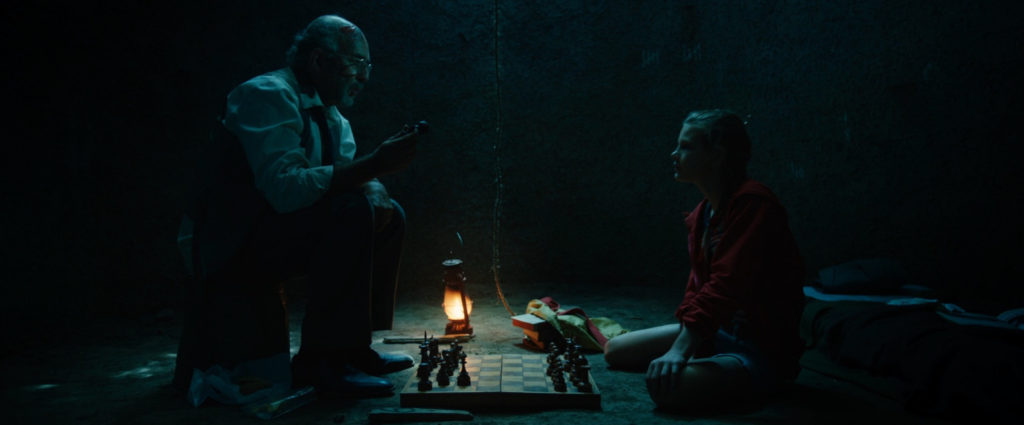
Being an observant girl, Gitty has heard rumblings about a land developer buying up all of the foreclosed farms in the area and realizes it must be Jonathan. Peaking around corners, in hallway shadows, hiding in a hayloft, Gitty also overhears conversations between her father and brother Martin and an unknown woman named Vera who Gitty keeps seeing in her dreams as a Dark Rider – a woman garbed in black with a horned ram’s head atop her body and riding a horse. Slowly, Gitty figures out that her father is involved in the kidnaping of Jonathan, a man whom she now calls “friend.”
But her secret about her friendship with Martin is no longer secret as Martin has been spying on her. Threatening Gitty, Martin takes his threats to a darker level, first when he kills her chicken Happy and then when he cuts off one of Jonathan’s fingers, putting in the refrigerator for Gitty to find. Then he reveals to Abe and Vera that Gitty knows Jonathan.
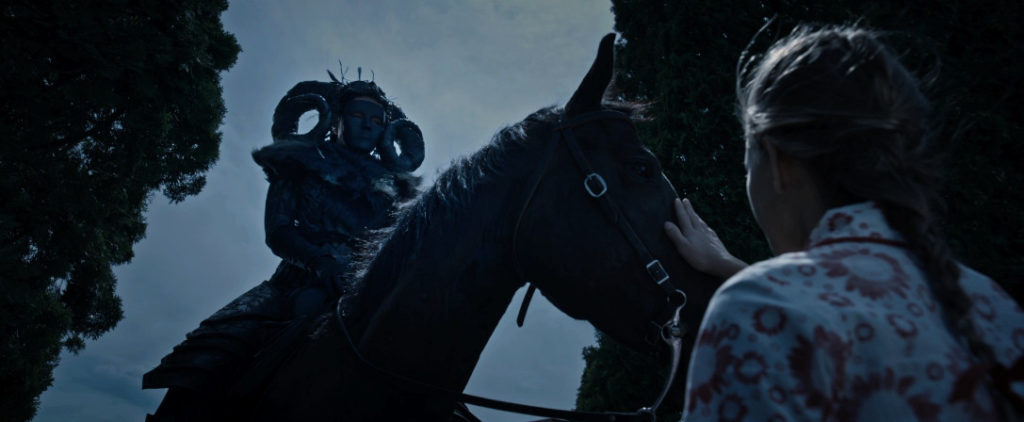
With a climactic showdown imminent and Gitty’s brother Martin becomes more unstable and violent, with Vera pulling Abe’s strings, Gitty is soon faced with ethical and moral decisions to rival those of Solomon.
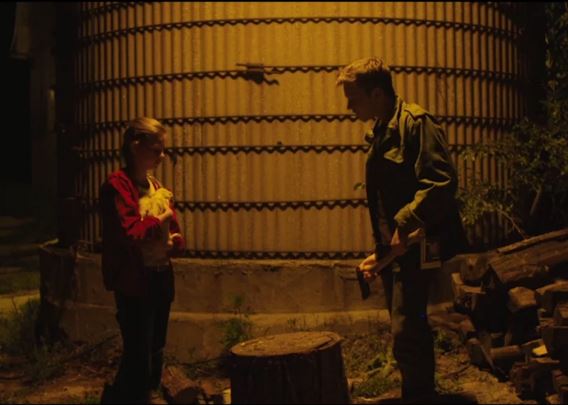
Beyond the story itself, AMERICAN FABLE rises and falls on the performances of and chemistry between newcomer Peyton Kennedy and veteran character actor Richard Schiff as Gitty and Jonathan, respectively. Kennedy is a standout on her own, but when paired with Schiff, the dynamic unfolds beautifully. Two people from two different worlds, one being a young girl who’s trying to figure out right and wrong and exactly what’s going on, and another being wise of the world, yet sensitive to Gitty’s youth so as not to adversely impact her independent thinking processes. The relationship between Gitty and Jonathan is already well-crafted in script, but by casting Kennedy and Schiff, it just soars on screen with a genuine warmth.

Describing Schiff as “fantastic”, director Hamilton is quick to note “The other actors were wonderful, but when Richard showed up on set, everything changed. Everybody was so inspired. He elevated the set. He’s something else.”
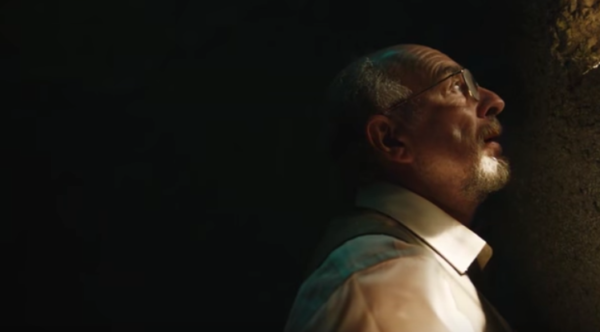
As wonderful as Peyton Kennedy is working with Schiff, a bulk of the film rests on her young shoulders solo, primarily in scenes which are introverted reflections with no dialogue. There is a great quietness to AMERICAN FABLE that allows for reflection and thought by not only Gitty, but the audience. Kennedy has a presence befitting an observational and tacitly questioning performance within a character. There’s a maturity and stillness to her but also a profound innocence. It’s that stillness and that quietness what makes for great acting. She is both striking and moving in her craft.

As Abe, Kip Pardue is a comfortable fit. Believable as a caring father. Believable as a scared man trying to save his family home. Pardue does, however, step up his game a bit when going toe-to-toe with Zuleikha Robinson’s Vera. As Vera, Robinson is perfection as this Mephistophelean character, be it in everyday business wear or as the Dark Rider in Gitty’s dreams. Adding another dimension to Robinson and the character of Vera is the interplay with Gavin MacIntosh’s Martin who lusts for Vera, wanting to prove himself worthy and willing to commit any illegal or heinous act to do so. MacIntosh is a powerful presence that provides an off-kilter edge and tension to the story as a whole.
Not to be overlooked is a fun, lighter aspect to the film thanks to Rusty Schwimmer as an overly-friendly, retired police officer new to the farming community.
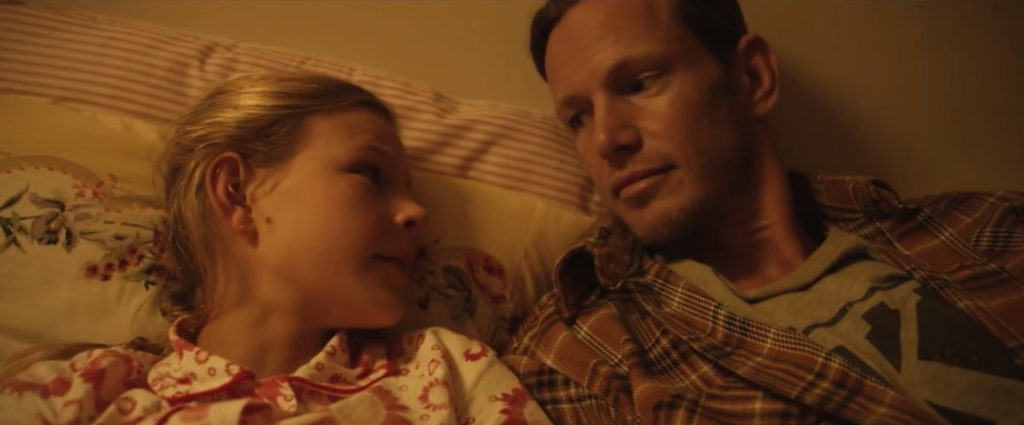
Written and directed by Hamilton, while the story on the whole is strong and the characters well defined and relevant, some of the mythology which we see play out through Gitty’s dreams feels not quite as well developed given it’s metaphoric nature. Where she truly excels though is with balance and in setting forth the issues and themes that comprise the core of the story. Originally writing the film from the POV of Abe, with an organic shifting to the POV of Gitty, it becomes more effective and gives one the ability to have the innocence of a child looking objectively at both sides of the coin. Farms are folding. Abe is a really good loving father. Sarah is a good mother. Abe just wants to take care of his family and support them. But they are living in desperate times which posits the question, what would you do in Abe’s shoes. Desperate times often call for desperate measures and when one may feel forced into making deals with the Devil, it’s difficult to criticize or condemn because of the intent behind their actions. Tension and fear are palpable. Very strong concepts for thought and discussion long after the film ends.
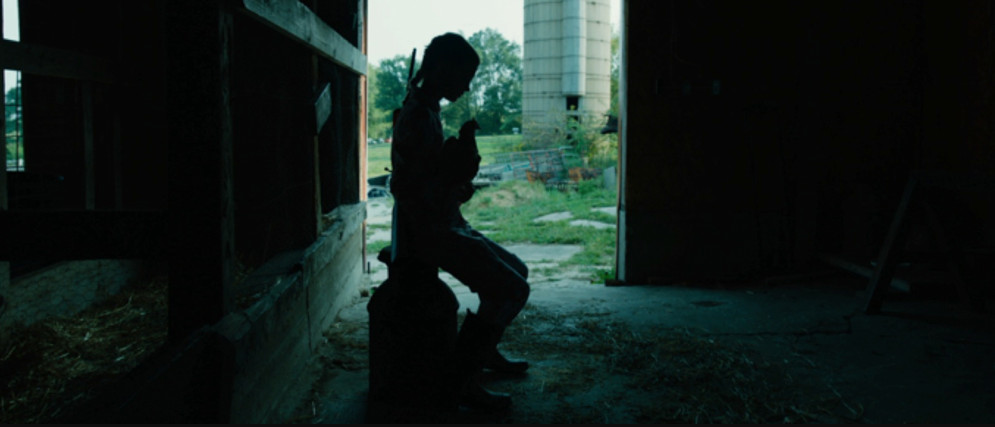
Hamilton’s greatest strength, however, is in creating the visual tonal bandwidth for AMERICAN FABLE. Once the POV shifted to that of Gitty, it allowed Hamilton and her cinematographer Wyatt Garfield to open up the fantastical dreamlike aspect of the film, and make the visuals overall a bit more magical because a child sees the world more magically. Every frame in this film could be a stand alone image hanging on a wall. Every frame is stunning. The use of color, the saturation, use of a wide lens, symmetrical framing – balance extends beyond the written word into the visuals so that every frame is picture perfect.
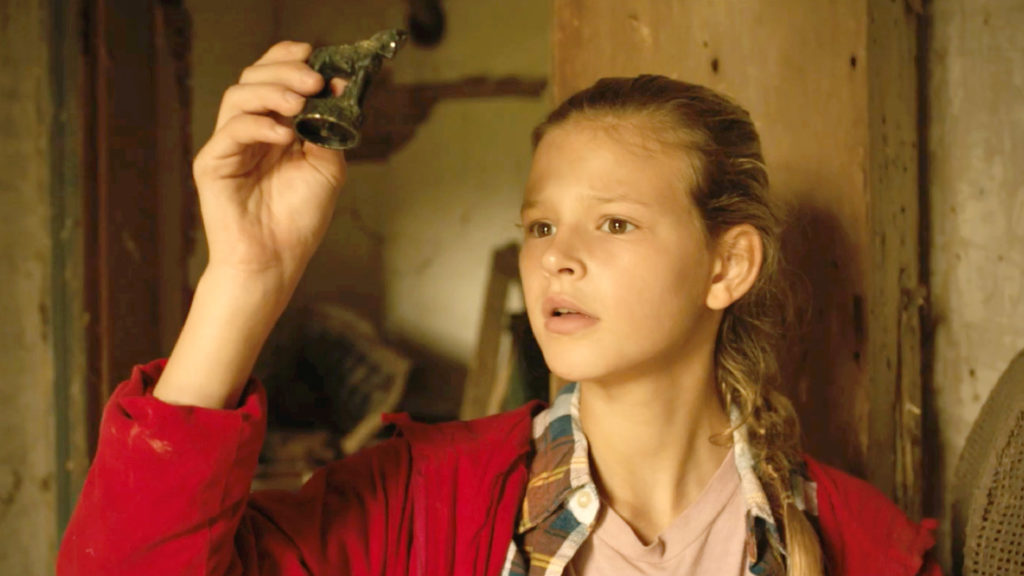
Color plays an important part in AMERICAN FABLE serving as metaphor and identification. (Watch out for red.) Assigning a specific color to each character, we are able to subtly track each character subconsciously while the key use of a bluish-green within the silo, slowly moves further into each frame and ultimately into the family home as more of the truth and violence unfolds. Night scenes are rich, inky blue-black with twinkling stars. One of the most significant visual designs in the film comes in the third act with a tonal shift “into the light”, filling the frame with sunlight and blue skies akin to a metamorphosis. Beautifully done. On the whole, the visuals feel like “humidity done in color.” If humidity had color, the weight of it is the look of AMERICAN FABLE.
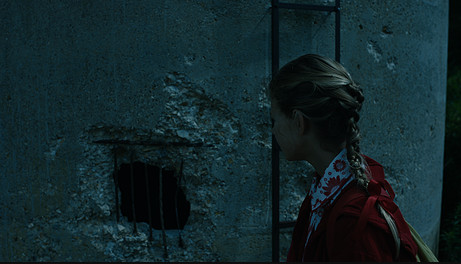
A testament to Hamilton’s eye and that of DP Garfield, are Gitty’s dream sequences. Metaphoric and magical they go beyond the Dark Rider. One sequence in particular begins with an almost medieval religious iconography and morphs into a modern day night-time county fair event centered around a gorgeous carousel. The entire sequence is laced with reds and golds with the carousel as the centerpiece, twinkling and glistening against a black night. Gorgeous. There is a breathtaking beauty which contrasts the underlying horror of the dream. Wonderful juxtaposition. Even “in real life” rote events such as Gitty riding her bicycle through the farm, to the silo as her journey always takes her through cornfields with stalks reaching high in the sky and cloaking her and then crossing through a cemetery, are strong metaphors carried through the film.
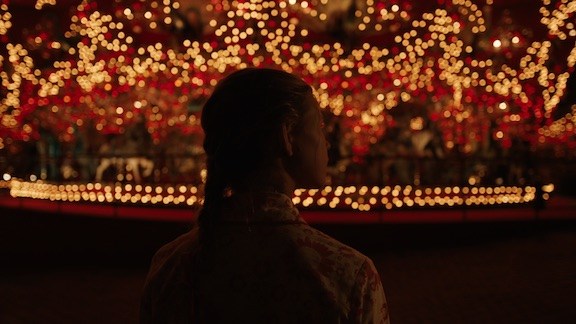
Framing of shots is essential to the tone of AMERICAN FABLE. All perfect and perfectly beautiful. There is a Kubrick-esque influence to the individual frame design with each frame clearly lit for that specific frame. The attention to detail in the grand scheme of storytelling amazes. Through the visuals we are equally spellbound by moments of terror and those of wonder. It’s a rich and telling juxtaposition that mirrors the tone of the story.
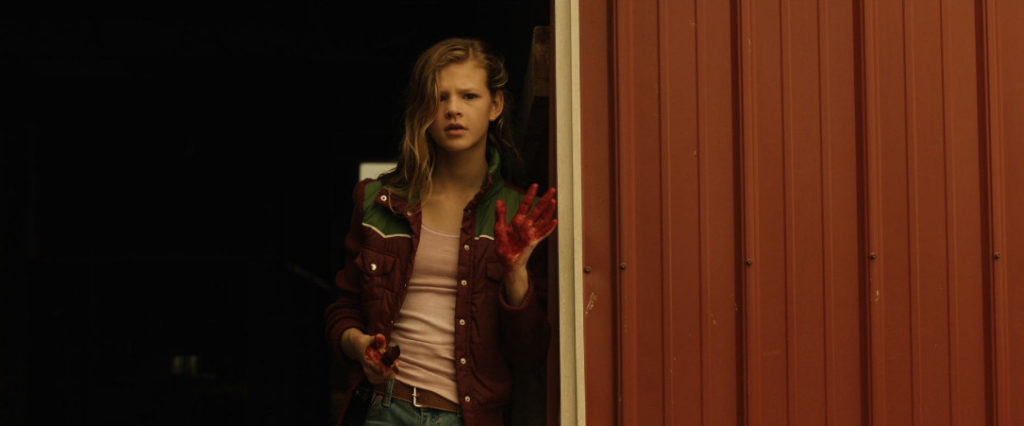
The icing on the cake is a terrifyingly beautiful score by Ginggar Shankar. Haunting and foreboding, relying heavily on strings with an almost chorale feel, just adds to the mystique of AMERICAN FABLE.
Anne Hamilton more than proves her directorial and storytelling mettle with AMERICAN FABLE. This is one director to put on your radar. Can’t wait to see what she delivers next.
Written and directed by Anne Hamilton
Cast: Peyton Kennedy, Richard Schiff, Kip Pardue, Gavin MacIntosh, Rusty Schwimmer












